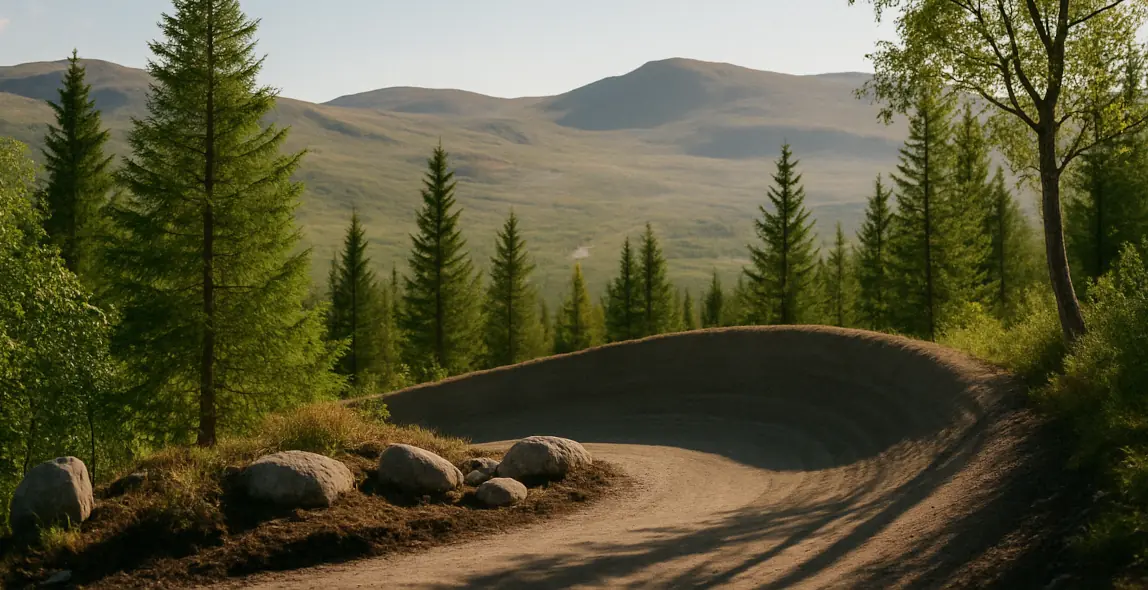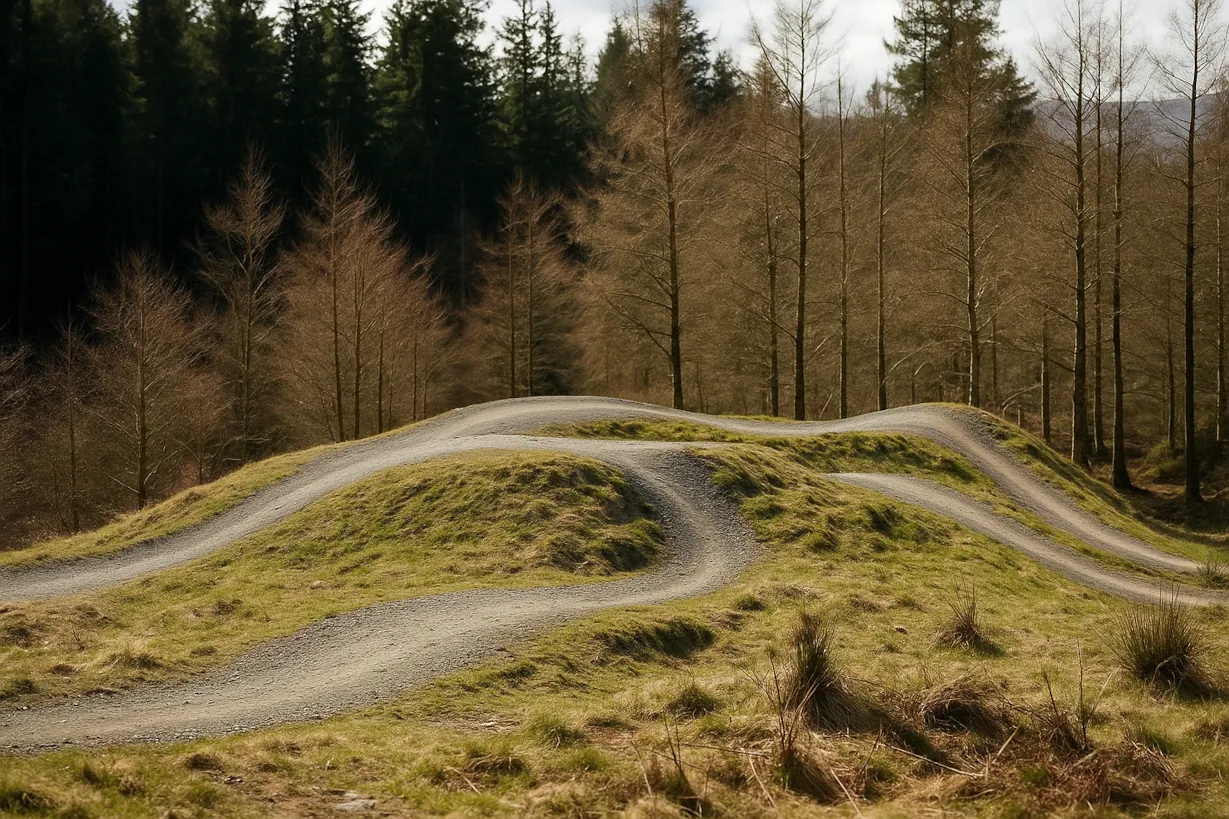Berm/Turn Calculator
Determine proper dimensions and banking angles for berms based on expected speed and turn radius
Build perfectly banked berms and turns with our physics-based calculator. Input rider speed and turn radius to calculate the optimal banking angle, height, and dimensions for smooth, safe cornering on your mountain bike trails.
Typical trail riding speeds: 8-25 mph
Smaller radius = tighter turn = higher lean angle required
Results will appear here
Enter speed and turn radius to calculate berm dimensions
How It Works
This calculator uses the physics formula lean angle = arctan(v²/gr) where:
- v = rider speed
- g = gravity (9.81 m/s²)
- r = turn radius
The bank angle of the berm reduces the required lean angle by the rider. A properly banked turn allows riders to maintain speed and control through corners.
Note: This calculator is a guideline only. Results may include a margin of error. Always verify in the field.
Step-by-step guide to designing properly banked berms with optimal dimensions using our physics-based calculator.
Physics-Based Calculations
The calculator uses physics principles to accurately model berm forces:
- Centrifugal Force: The outward force experienced by riders in turns
- Banking Angle: The angle that counteracts centrifugal force
- Lean Angle: How far the rider must lean to navigate the turn
- Difficulty Rating: Assessment of technical challenge based on required lean
Enter Rider Speed
Input the expected speed of riders entering the turn in mph or km/h. Consider the approach to the turn and typical rider speeds for your trail type.
Enter Turn Radius
Input the radius of the turn in feet or meters. Tighter turns (smaller radius) require steeper banking to maintain traction.
Adjust Bank Angle
Set your desired bank angle or use the calculator's recommended angle. The calculator will show how this affects the required rider lean angle.
View Results
Review the calculated lean angle, difficulty rating, and recommended berm dimensions. Adjust inputs as needed to achieve your desired trail difficulty level.
Results Update Automatically
The calculator will instantly provide results as you change the input values. No need to click a calculate button.
Construction Recommendations
- Berm Height: Must support the required bank angle (typically 1-3 feet for most trail berms). Aim for a height that's approximately 1/3 to 1/2 of the berm width.
- Turn Width: Wider turns are needed for higher speeds (minimum 4-6 feet for most trails). For every 5 mph increase in speed, consider adding 2-3 feet of width.
- Progressive Banking: Helps riders enter turns safely by gradually increasing bank angle from entrance to apex, then decreasing toward exit. This creates a more natural flow.
- Drainage: Ensure proper drainage to prevent water pooling and erosion. Use slight outslope, drainage channels, or grade reversals before and after the berm.
Difficulty Considerations
- BBeginner Trails: Keep lean angles under 20° with generous banking (25-35°) and wider radii (12-15+ feet). Use standard berms with gradual entry/exit.
- IIntermediate Trails: Lean angles of 20-30° with moderate banking (30-45°) and medium radii (8-12 feet). Progressive berms work well here.
- AAdvanced Trails: Lean angles of 30-45° with steeper banking (40-55°) and tighter radii (6-10 feet). Consider decreasing radius designs.
- EExpert Trails: Lean angles over 45° require special design considerations including very steep banking (50-60°), specialized drainage, and reinforcement.

